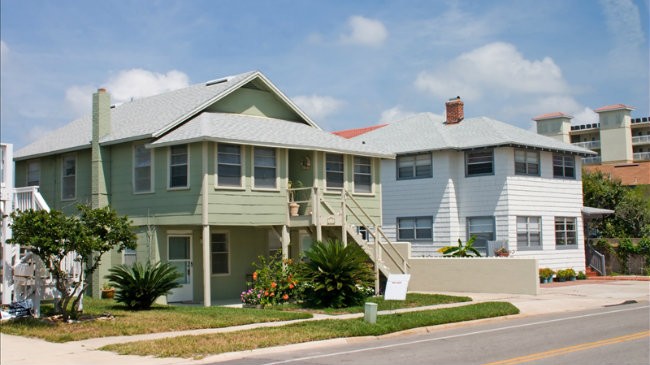Why We Bought Rental Property With A $40 000 Windfall
Post on: 5 Июль, 2015 No Comment

Deciding how to spend or invest a windfall is never easy, but for us, the choice was clear: Rather than play the stock market or pay off student loans, we got into real estate.
Two years ago, my fiancée, Laura, had finally completed her bachelor’s degree and was ready to start working full time. Like many of today’s graduates, however, she graduated with student loan debt.
$30,000 of it.
How did we tackle this problem head on and manage to make 30K along the way? Here’s our story…
After graduation, Laura got a job at a small advertising agency. The starting salary was far from six figures, but enough to cover the bills.
Six months later, the student loans came due and we calculated the monthly payments were going to be roughly $480 a month. Ouch.
Fortunately for us, Laura isn’t very “spendy” and never amassed even a single dollar of high interest consumer debt; she owned her vehicle outright and had no credit card balances.
A few months into repaying her student loans, we learned that Laura’s grandmother passed away following a long illness. Unexpectedly, Laura inherited $40,000 from her grandmother.
WHAT WE DID WITH THE MONEY
Obviously, it was decision time. How should we best use that windfall?
It was interesting talking to different family members regarding how they would allocate the inheritance they received. Some were going to buy a new car, others were going to fix up their primary residence, and a few talked about locking the money away in CD accounts.
Ultimately, we decided to use the money to purchase an investment property.
Everyone we talked to approved of our decision to use the money to buy a house, but their jaws dropped when we told them that we weren’t going to live in it! Few could understand why we would buy an investment property before paying off Laura’s student loansor at least buy a home for ourselves!
WHY WE DIDNT PAY OFF THE STUDENT LOANS
Before I go into too much detail, I want to preface the following by saying that we did not decide to implement this strategy “blindly”. We have other rental properties and did our due diligence before making this decision.
With that said, here’s are the three big reasons we made this decision.
- Student loan debt is tax-deductible. Laura’s loans have an 8% APR, which after tax deductions and the standard rate of inflation (3% if you believe government statisticsanother discussion altogether) the actual APR she’s paying is closer to 4%.
- Liquidity. If we used the windfall to pay off her student loans in full, Laura would have had no additional cash reserves. This would have made her incredibly vulnerable in an emergency (for example, if she needed major medical care or became unemployed.
- Lazy money. We knew that if we paid off all of her debt, then those dollars would no longer be able to produce additional income for us. Based on our prior experience in real estate, we were convinced that a rental property could produce an annual 25-30% return on our initial investment of $40K or less.
Still scratching your head? Here’s how it worked.
The Details
After researching our target market for about three months, we finally got the perfect place under contract:
Here is what the investment looks like:
- Purchase price. $110k.
- Market Value. Between $135 and 145k (based upon traditional sales, i.e. non-REO or short-sales. Note that the property had $25-35K of built-in equity).
- Down payment. $27K.
- Closing costs. $4K.
Total out of pocket investment. $31.5K.
- Estimated Rent: Two units, a 2bed/1bath: $750 and 3bed/2bath: $1,000 for a total rent of $1,750. (We based on multiple conversations with various property managers).
- Estimated mortgage with tax/insurance: $700.
- Estimated repairs: $1,000.
- Estimated monthly expenses (water, trash, gardener, etc): $165.
Estimated cash flow: $1,750 ($700 + $165) = $885.
- Cash reserves needed: $3,500 (five months of mortgage payments).
Yearly cash flow: $885 x 12 = $10,620 subtracted by a presumed vacancy rate of 7% ($743) = $9,877.
ROI: $9,877 (actual cash flow) divided by $31,500 (initial down payment plus closing costs) = 31% cash-on-cash return.
When factoring in the mortgage tax deduction, depreciation and possible appreciation, the actually ROI might be closer to 35-38%
CLOSING THOUGHTS
After acquiring this property, Laura will generate enough in rental payments to cover her monthly student loan payments each month and have excess cash flow.
This, in my opinion, is the ultimate example of OPM (other people’s money). Both the student loan interest and the mortgage interest are tax deductible, and she will be paying back the loans with her tenants’ cheaper dollars (due to inflation). And after the student loans are paid off, she’ll still have an income-producing asset.
I’m not advocating this strategy for everyone, but I thought this was an out-of-the-box approach to paying off debt that’s worth sharing. Let me know your thoughts…














